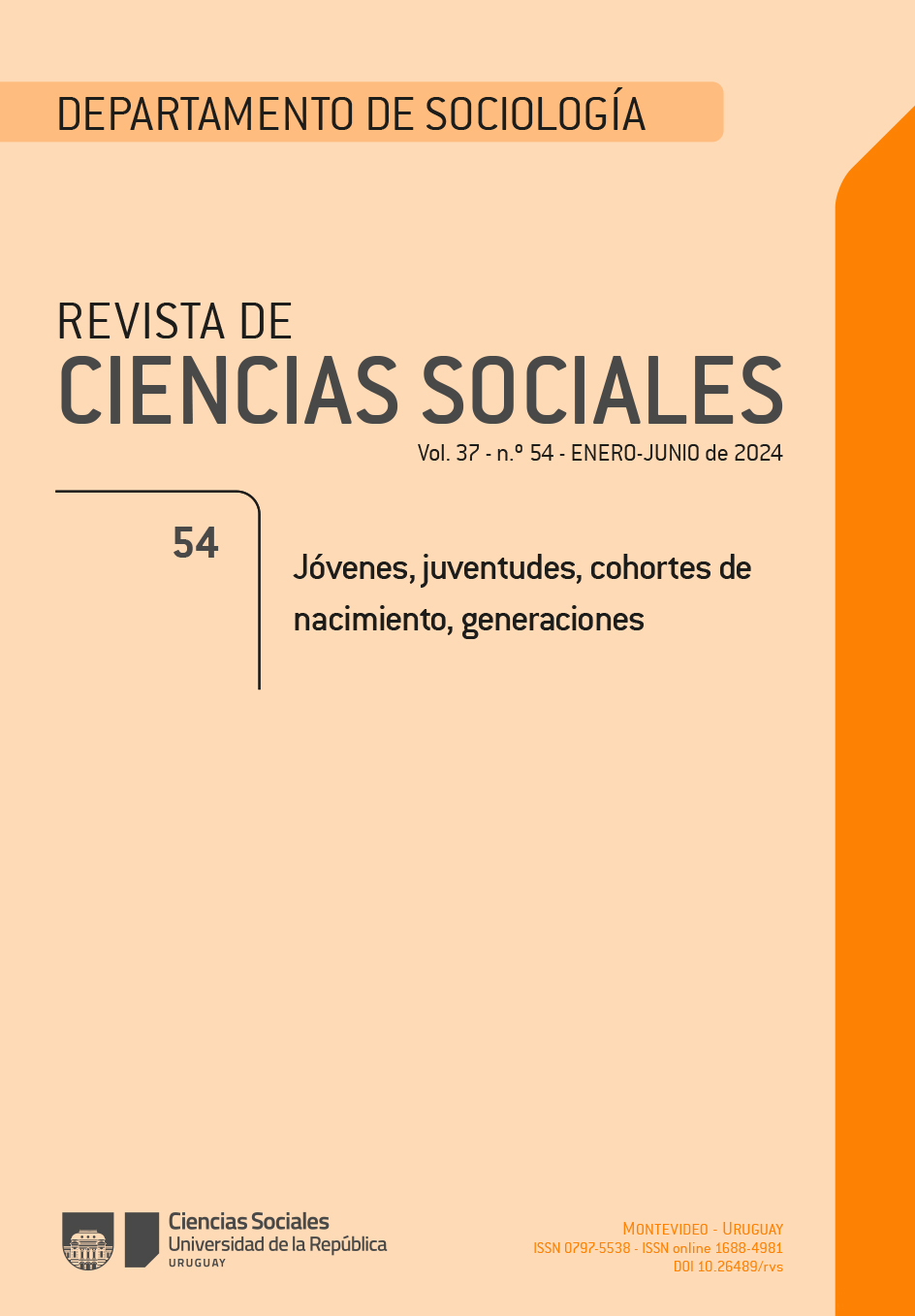Informal employment in Uruguay between 2010-2022.
The new normal?
DOI:
https://doi.org/10.26489/rvs.v37i54.9Keywords:
informality of work, informality as an indicator of the developing model, profile of informal workersAbstract
Over the past thirty years, the Latin American and Caribbean region has been part of the process of deconstructing the protected work model, especially with the impetus of neoliberal policies aimed at flexibilizing these relationships and gradually changing labor laws. One of the indicators is the informalization of employment, in this study referring to the lack of contributions to social security and the social benefits associated with wage labor. Secondary sources from the National Institute of Statistics, Continuous Household Surveys between the years 2010-2022, were analyzed to understand the socio-economic characteristics and profile of workers. It is noteworthy that the Uruguayan and Chilean cases have the particularity of reducing informal labor.
Downloads
References
Abílio, L. C. (2020). De motoboy invisível a entregador organizado: uberização e o trabalhador just in time na pandemia. En: D. A. Oliveira y M. Pochmann (orgs.). Devastação do trabalho: a classe do labor na crise da pandemia. Brasilia: Positiva/CNTE, pp. 261-289.
Álvarez-Vaz, R. y A. Castrillejo (2015). Como reconstruir el INSE en una encuesta sanitaria poblacional. Montevideo: IESTA, FCEA, Udelar.
Antunes, R. (2022). Capitalismo pandȇmico. San Pablo: Boitempo.
Antunes, R. (2020). O privilégio da servidão. San Pablo: Boitempo.
Antunes, R. (2011). Os modos de ser da informalidade: rumo a uma nova era da precarização estrutural do trabalho? Revista Serviço Social, 107, pp. 405-419.
Araujo Filgueiras, V. (2021). “É tudo novo”, de novo. San Pablo: Boitempo.
Bamber, P. y C. Staritz (2016). The gender dimensions of Global Value Chains. Geneva: International Centre for Trade and Sustainable Development (ICTSD). Disponible en: <https://www.ictsd.org/sites/default/files/research/the_gender_dimensions_of_global_value_chains_0.pdf> [acceso 11/9/2019].
Barrera, A. (2011). Nuevas realidades, nuevos paradigmas: la nueva revolución agrícola. Revista Comunica – IICA, 7, pp. 10-21.
Cea D’Ancona. M. A. (1996). Metodología cuantitativa: estrategias y técnicas de investigación social. Madrid: Síntesis.
Comisión Agrupada de Nivel Socio Económico (CAINSE) (2004). Índice Primario de Nivel Socioeconómico para Montevideo. Montevideo: CAINSE.
Davis, M. (2006). Planeta favela. San Pablo: Boitempo.
Instituto Nacional de Estadística (2022). Cambios en la metodología, periodicidad y difusión de los indicadores de la Encuesta Continua de Hogares a partir de julio 2021. Montevideo: INE. Disponible en: <https://www5.ine.gub.uy/documents/ANDA/ECH/2021/Nota%20metodologica%20ECH%20Julio%202021.pdf> [acceso 31/08/2022].
Krein, J. D.; M. Biavaschi y M. Teixeira (2020). Emprego, trabalho e renda para garantir o direito à vida. Nexo [en línea], 17 de abril. Disponible en: <https://www.nexojornal.com.br/ensaio/debate/2020Emprego-trabalho-e-renda-para-garantir-o-direito-%C3%A0-vida> [acceso 31/08/2022].
Marx, K. (1978). Capítulo VI (inédito). San Pablo: Ciencias Humanas.
Perera, M. (2018). Índice de Nivel Socioeconómico. Propuesta de actualización. Montevideo: CINVE. Disponible en: <https://portal.factum.uy/pdf/INSE_informe_2018.pdf>.
Standing, G. (2013). El precariado, una nueva clase social. Barcelona: Editorial Pasado & Presente.
Downloads
Published
Issue
Section
License
Copyright (c) 2024 Juan Romero

This work is licensed under a Creative Commons Attribution 4.0 International License.


